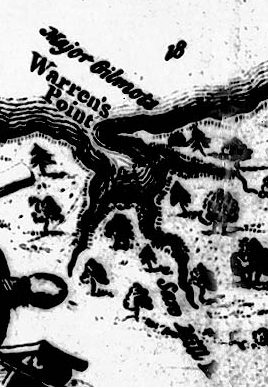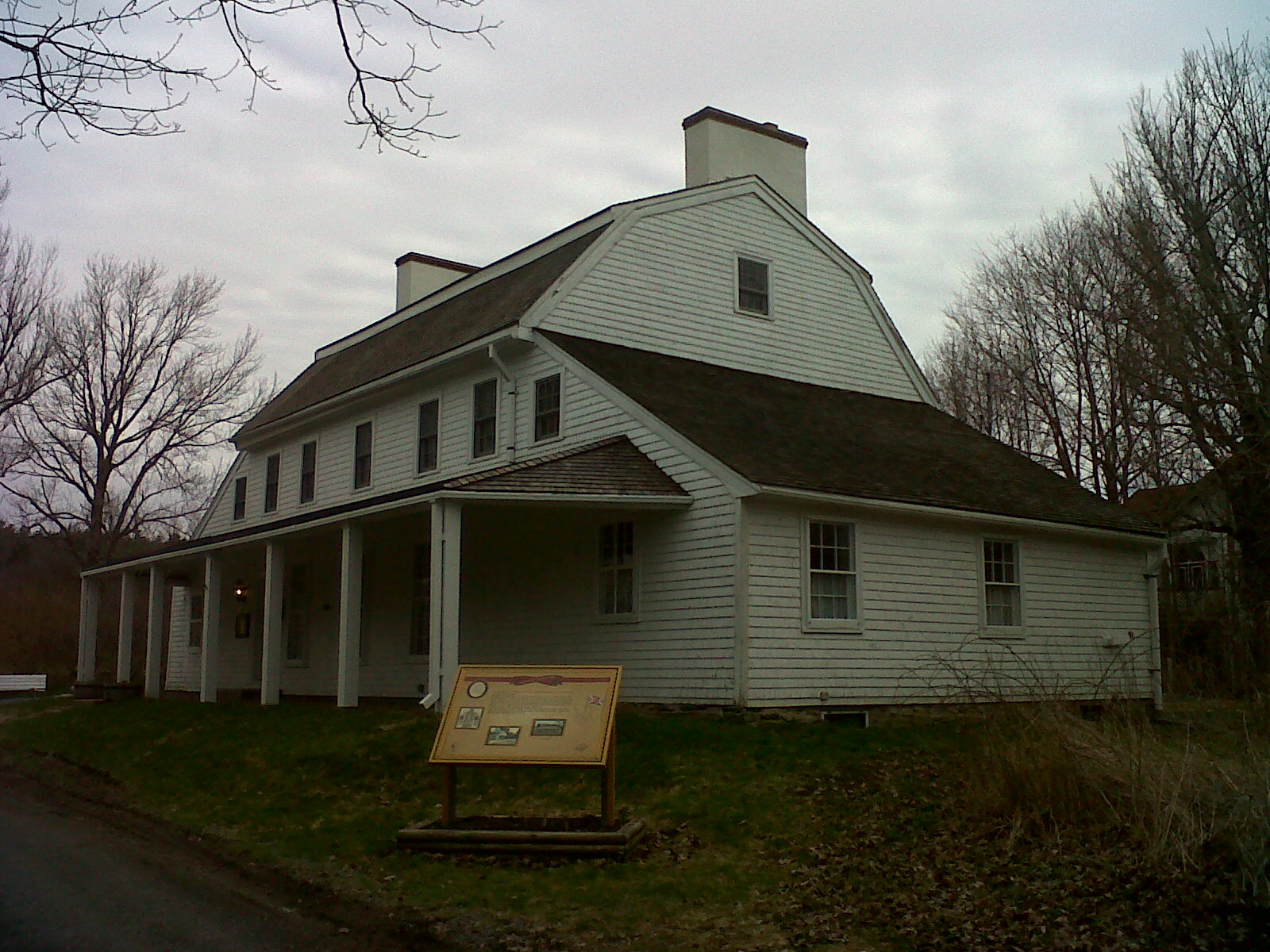|
Raid On Dartmouth (1749)
The Raid on Dartmouth (1749) occurred during Father Le Loutre's War on September 30, 1749 when a Mi'kmaw militia from Isthmus of Chignecto, Chignecto raided Major Ezekiel Gilman's sawmill at present-day Dartmouth, Nova Scotia, killing four workers and wounding two. This raid was one of seven the Wabanaki Confederacy and Acadians would conduct against the settlement during the war. Historical context Despite the Kingdom of Great Britain, British , Siege of Port Royal (1710), Conquest of Acadia in 1710, Nova Scotia remained primarily occupied by Catholic Acadians and Mi'kmaq. Father Le Loutre's War began when Edward Cornwallis arrived to establish Halifax Regional Municipality, Halifax with 13 transports on June 21, 1749. By the time Cornwallis had arrived in Halifax, there was a long history of the Wabanaki Confederacy (which included the Mi'kmaq) killing British civilians along the New England/ Acadia border in Maine (See the Northeast Coast Campaigns King William's War#Northe ... [...More Info...] [...Related Items...] OR: [Wikipedia] [Google] [Baidu] |
Dartmouth Heritage Museum
Dartmouth may refer to: Places * Dartmouth, Devon, England ** Dartmouth Harbour * Dartmouth, Massachusetts, United States * Dartmouth, Nova Scotia, Canada * Dartmouth, Victoria, Australia Institutions * Dartmouth College, Ivy League university in Hanover, New Hampshire, United States **Dartmouth Big Green, athletic teams representing the college ** ''The Dartmouth'', a newspaper of Dartmouth College ** Dartmouth University, a defunct institution in New Hampshire * University of Massachusetts Dartmouth, a university in Dartmouth, Massachusetts, United States * Dartmouth–Hitchcock Medical Center, a research hospital in Lebanon, New Hampshire * Britannia Royal Naval College or Dartmouth, a college in Dartmouth, Devon, England Ships * HMS Dartmouth (1655), HMS ''Dartmouth'' (1655), a 22-gun ship * HMS Dartmouth (1693), HMS ''Dartmouth'' (1693), a 48-gun fourth rate * HMS Dartmouth (1698), HMS ''Dartmouth'' (1698), a 50-gun fourth rate * HMS Dartmouth (1910), HMS ''Dartmouth'' (1910), ... [...More Info...] [...Related Items...] OR: [Wikipedia] [Google] [Baidu] |
Siege Of Louisbourg (1745)
The siege of Louisbourg took place in 1745 when a New England colonial force aided by a British fleet captured Louisbourg, the capital of the French province of Île-Royale (present-day Cape Breton Island) during the War of the Austrian Succession, known as King George's War in the British colonies. The northern British colonies regarded Louisbourg as a menace, calling it the "American Dunkirk" due to its use as a base for privateers. There was regular, intermittent warfare between the French and the Wabanaki Confederacy on one side and the northern New England colonies on the other (''See the Northeast Coast Campaigns of 1688, 1703, 1723, 1724''). For the French, the Fortress of Louisbourg also protected the chief entrance to Canada, as well as the nearby French fisheries. The French government had spent 25 years in fortifying it, and the cost of its defenses was reckoned at thirty million livres. Although the fortress's construction and layout was acknowledged as having ... [...More Info...] [...Related Items...] OR: [Wikipedia] [Google] [Baidu] |
Lawrencetown, Halifax County, Nova Scotia
Lawrencetown (1986 population: 2,680) is a Canadian rural community in the Halifax Regional Municipality in Nova Scotia, Canada. The settlement was established during the eve of Father Le Loutre's War and at the beginning of the French and Indian War. History Father Le Loutre's War began when Edward Cornwallis arrived to establish Halifax with 13 transports on June 21, 1749. By unilaterally establishing Halifax, the Mi'kmaq believed the British were violating earlier treaties (1726), which were signed after Father Rale's War. The British quickly began to build other settlements. To guard against Mi'kmaq, Acadian and French attacks on the new Protestant settlements, British fortifications were erected in Halifax (1749), Bedford (Fort Sackville) (1749), Dartmouth (1750), Lunenburg (1753) and Lawrencetown (1754). In 1754, Nova Scotia's Lieutenant Governor Charles Lawrence, offered land grants to twenty families, who referred to their settlement as Lawrence's Town, which b ... [...More Info...] [...Related Items...] OR: [Wikipedia] [Google] [Baidu] |
Lunenburg, Nova Scotia
Lunenburg is a port town on the South Shore of Nova Scotia, Canada. Founded in 1753, the town was one of the first British attempts to settle Protestants in Nova Scotia. The economy was traditionally based on the offshore fishery and today Lunenburg is the site of Canada's largest secondary fish-processing plant. The town flourished in the late 1800s, and much of the historic architecture dates from that period. In 1995 UNESCO designated it a World Heritage Site. UNESCO considers the site the best example of planned British colonial settlement in North America, as it retains its original layout and appearance of the 1800s, including local wooden vernacular architecture. UNESCO considers the town in need of protection because the future of its traditional economic underpinnings, the Atlantic fishery, is now very uncertain. The historic core of the town is also a National Historic Site of Canada. Toponymy Lunenburg was named in 1753 after the Duke of Braunschweig-Lüneburg ... [...More Info...] [...Related Items...] OR: [Wikipedia] [Google] [Baidu] |
History Of Dartmouth
Dartmouth founded in 1750, is a Metropolitan Area and former city in the Canadian province of Nova Scotia. Dartmouth and the neighbouring metropolitan area of Halifax form the urban core of the Halifax Regional Municipality (HRM). Both cities, along with the town of Bedford and the Municipality of the County of Halifax were dissolved on April 1, 1996 when they were amalgamated into HRM. Mi'kmaq Prior to European colonization, the region around Dartmouth was inhabited the indigenous Mi'kmaq people, who had occupied the area for roughly a millennia. The Mi'kmaq called the area Ponamogoatitjg (Boonamoogwaddy), which has been varyingly translated as "Tomcod Ground" or "Salmon Place" in reference to the fish which were presumably caught in this part of Halifax Harbour. There is evidence that bands would spend the summer on the shores of the Bedford Basin, moving to points inland before the harsh Atlantic winter set in. From Dartmouth Cove, the Mi'kmaq would have followed an important ... [...More Info...] [...Related Items...] OR: [Wikipedia] [Google] [Baidu] |
Fort Sackville (Nova Scotia)
Fort Sackville was a British fort in present-day Bedford, Nova Scotia. It was built during Father Le Loutre's War by British adjacent to present-day Scott Manor House, on a hill overlooking the Sackville River to help prevent French, Acadian and Mi'kmaq attacks on Halifax. The fort consisted of a blockhouse, a guard house, a barracks that housed 50 soldiers, and outbuildings, all encompassed by a palisade. Not far from the fort was a rifle range. The fort was named after George Germain, 1st Viscount Sackville. Historical context Despite the British Conquest of Acadia in 1710, Nova Scotia remained primarily occupied by Catholic Acadians and Mi'kmaq. Father Le Loutre's War began when Edward Cornwallis arrived to establish Halifax with 13 transports on June 21, 1749. The British remained largely in Halifax, having attempted to establish a settlement east of Halifax near present-day Lawrencetown Beach they quickly abandoned the effort due to the threat of Mi'kmaq attacks. Four ... [...More Info...] [...Related Items...] OR: [Wikipedia] [Google] [Baidu] |
Bedford, Nova Scotia
Bedford is a community of the Halifax Regional Municipality, in Nova Scotia, Canada. History The area of Bedford has evidence of Indigenous peoples dating back thousands of years. Petroglyphs are found at Bedford Petroglyphs National Historic Site. The Bedford area is known as Kwipek to the Mi'kmaq First Nation. 18th century On 21 July 1749, Father Le Loutre's War began when Edward Cornwallis arrived to establish Halifax with 13 transports. The British quickly began to build other settlements. To guard against the Acadians, the French, and the Mi'kmaq, British fortifications were erected in Halifax (1749), Bedford (Fort Sackville) (1749), Dartmouth (1750), Lunenburg (1753) and Lawrencetown (1754). The history of Bedford began when Governor Edward Cornwallis organised his men and began the construction of a road leading to Minas Basin on the Bay of Fundy after establishing the garrison at Halifax. To protect it, he hired John Gorham and his Rangers to erect a fort on the ... [...More Info...] [...Related Items...] OR: [Wikipedia] [Google] [Baidu] |
Jean-Louis Le Loutre
Abbé Jean-Louis Le Loutre (; 26 September 1709 – 30 September 1772) was a Catholic priest and missionary for the Paris Foreign Missions Society. Le Loutre became the leader of the French forces and the Acadian and Mi'kmaq militias during King George's War and Father Le Loutre's War in the eighteenth-century struggle for power between the French, Acadians, and Miꞌkmaq against the British over Acadia (present-day Nova Scotia and New Brunswick). Historical context Nova Scotia had been under the rule of the British since the Treaty of Utrecht in 1713. The British were settled mostly in the capital Annapolis Royal, while Acadians and the native Mi'kmaq occupied the rest of the region. Île-Royale (present-day Cape Breton Island) remained under French control, as it had been granted to the French under the Treaty of Utrecht, and the mainland portion of Acadia (present-day Nova Scotia and New Brunswick) was British and contested by the French. In 1738, the French had no forma ... [...More Info...] [...Related Items...] OR: [Wikipedia] [Google] [Baidu] |
Penobscot
The Penobscot (Abenaki: ''Pαnawάhpskewi'') are an Indigenous people in North America from the Northeastern Woodlands region. They are organized as a federally recognized tribe in Maine and as a First Nations band government in the Atlantic provinces and Quebec. The ''Penobscot Nation'', formerly known as the ''Penobscot Tribe of Maine,'' is the federally recognized tribe of Penobscot in the United States."Tribal Directory" ''National Congress of American Indians''. Retrieved 30 August 2012. They are part of the , along with the , |
Royal Nova Scotia Historical Society
The Royal Nova Scotia Historical Society is a historical society in Halifax, Nova Scotia that was founded in 1878 and is the second oldest in Canada (The Literary and Historical Society of Quebec is the first.) The Society is a voluntary organization that operates without an office or paid staff. The Society first published the Nova Scotia Historical Quarterly and then the Nova Scotia Historical Review. Eventually the publication was named the Collections of the Royal Nova Scotia Historical Society and now it is known as the Journal of the Royal Nova Scotia Historical Society. Notable members * George Elkana Morton * Harry Piers * Archibald MacMechan * Thomas Beamish Akins Historical Plaques Image:Valley 244.jpg, Sir William Fenwick Williams, Annapolis Royal, Nova Scotia File:SirJohnMoorePlaqueHalifaxNovaScotia1.JPG, Sir John Moore Plaque Halifax, Nova Scotia File:Site of First Nova Scotia Court House and Legistlative Assembly, Scotia Square, Halifax, Nova Scotia.jpg, Site o ... [...More Info...] [...Related Items...] OR: [Wikipedia] [Google] [Baidu] |


.png)




